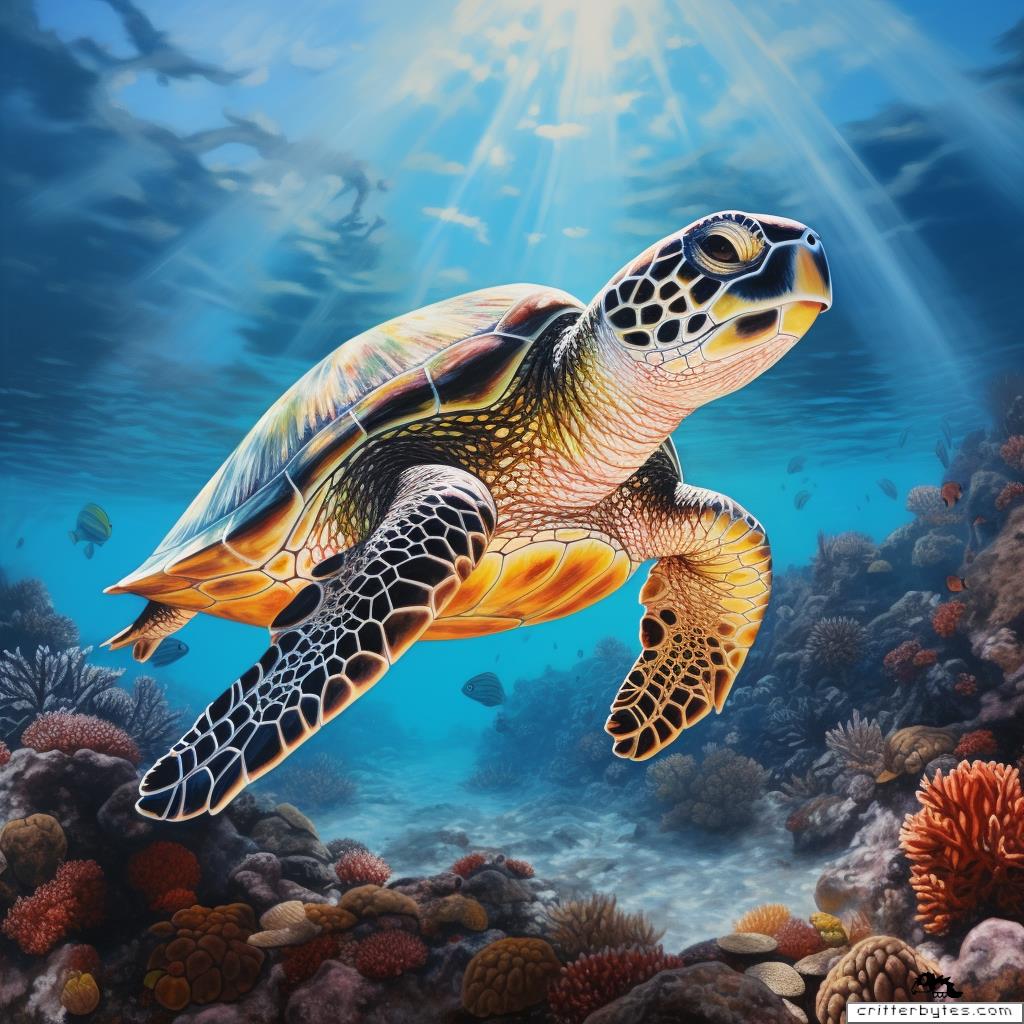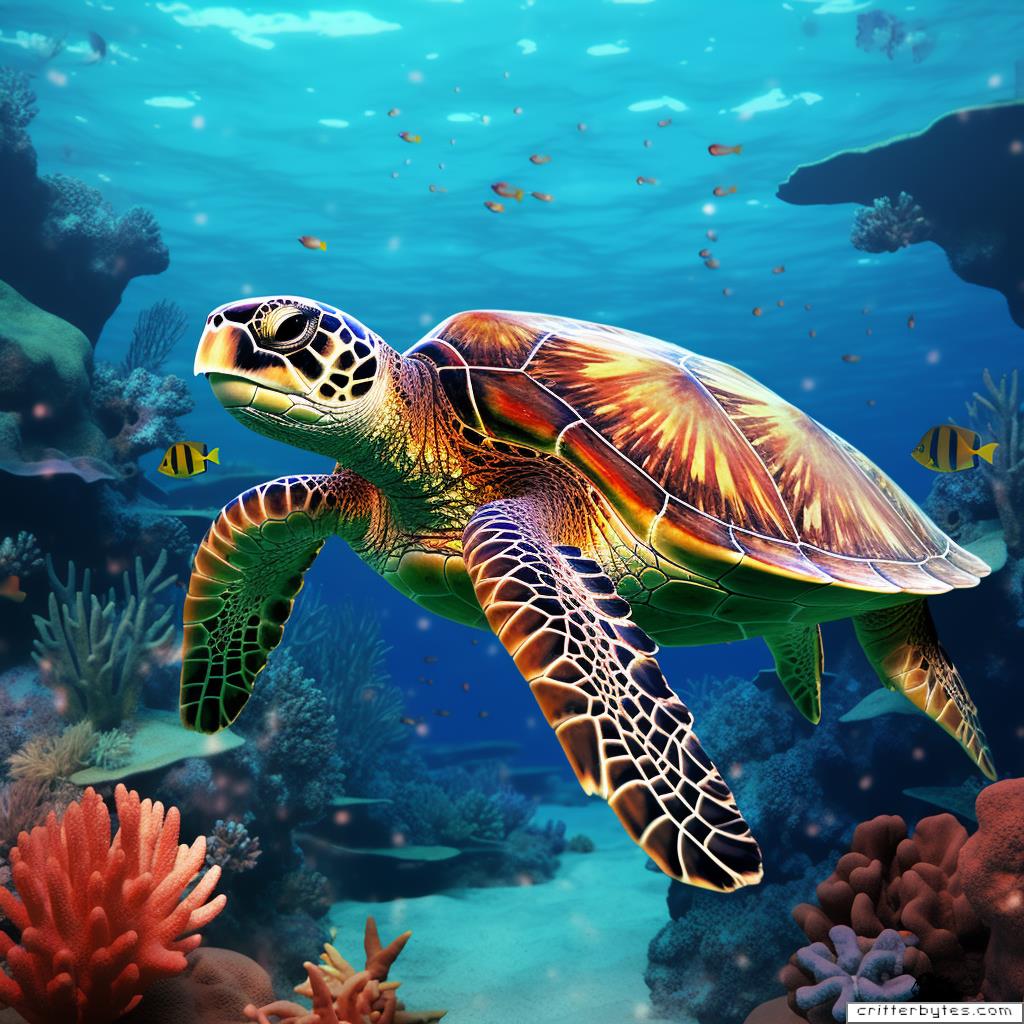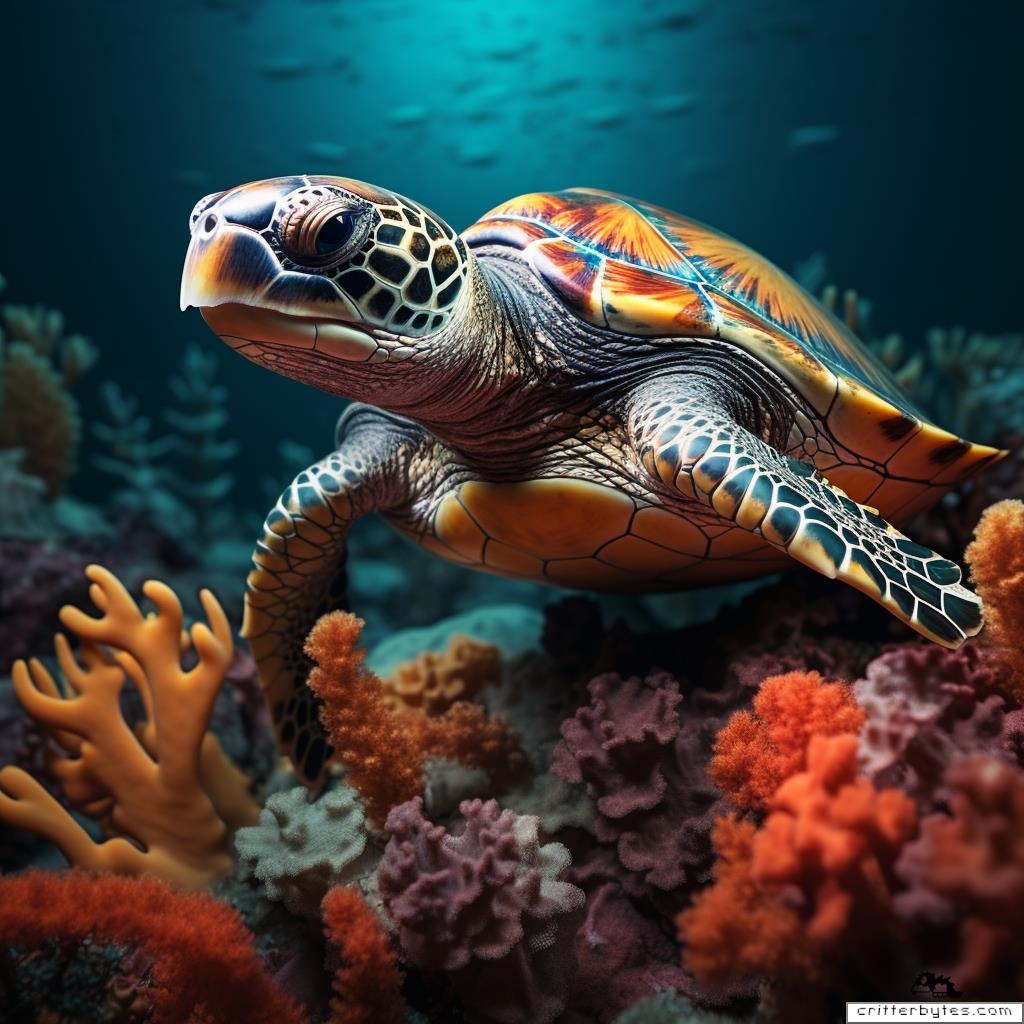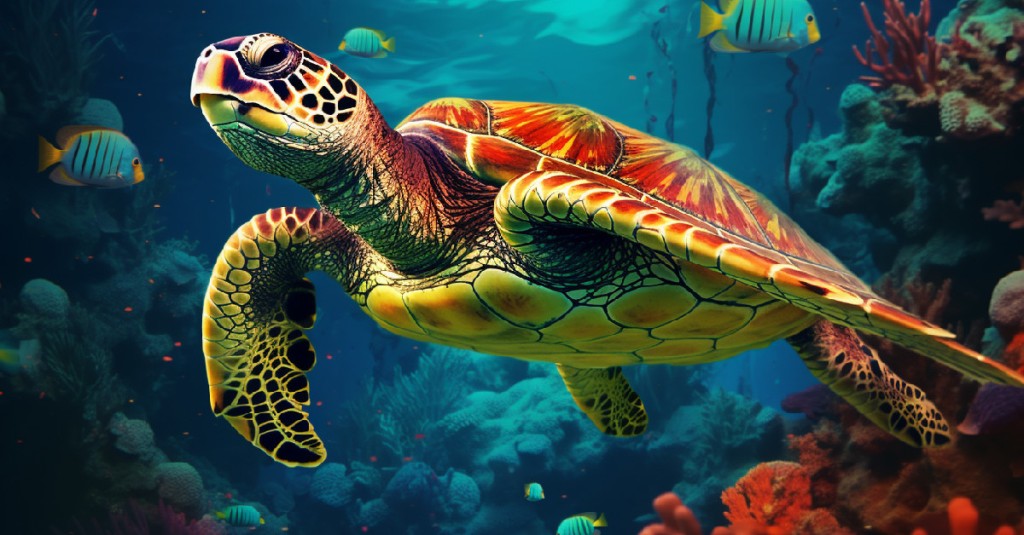
Incredible Navigators

Fun Facts
Physical Features:
- Hawksbill Sea Turtles have a hard shell called a carapace.
- Their shells have colorful patterns, which makes them unique.
- They have a sharp beak-like mouth that looks like a hawk’s beak.
- Hawksbill Sea Turtles have flippers for swimming in the ocean.
Habitat and Migration:
- Hawksbill Sea Turtles live in warm oceans around the world.
- They can be found in coral reefs, lagoons, and coastal areas.
- These turtles can migrate long distances to find food or lay their eggs.

Diet:
- Hawksbill Sea Turtles are omnivores, which means they eat both plants and animals.
- Their favorite food is sponges, but they also eat jellyfish, algae, and small fish.
Life Cycle:
- Female Hawksbill Sea Turtles lay their eggs on sandy beaches.
- They bury their eggs in the sand and leave them to hatch on their own.
- Baby turtles, called hatchlings, have to make their way to the ocean after they hatch.
- It’s hard for them because they have to avoid predators.
Protection:
- Hawksbill Sea Turtles are an endangered species, which means they need our help to survive.
- They are protected by laws in many countries to prevent hunting and habitat destruction.

Size and Weight:
- Hawksbill Sea Turtles can grow up to 3 feet long.
- They can weigh around 100-150 pounds, which is like the weight of a grown-up person.
Lifespan:
- Hawksbill Sea Turtles can live up to 50 years or even longer if they are not harmed by humans or other threats.
Camouflage:
- These turtles have a special ability to blend with their surroundings.
- Their shells and skin have colors that help them hide among coral reefs.

Shells and Scutes:
- Hawksbill Sea Turtles have a shell made of small plates called scutes.
- The scutes overlap each other and protect the turtle’s body.
Underwater Swimmers:
- Hawksbill Sea Turtles are excellent swimmers.
- They can dive deep into the ocean and hold their breath for a long time.
Reproduction:
- Female Hawksbill Sea Turtles only lay eggs every few years.
- They return to the same beach where they were born to lay their own eggs.

Nesting Season:
- The nesting season for Hawksbill Sea Turtles is usually during the summer months.
- They come ashore at night to lay their eggs when it’s safer.
Ecosystem Role:
- Hawksbill Sea Turtles play an important role in the ecosystem.
- They help control the population of their prey species and keep the coral reefs healthy.
Symbiotic Relationships:
- Hawksbill Sea Turtles have symbiotic relationships with other species.
- They help clean the reefs by eating sponges, and in return, the sponges provide camouflage for the turtles.
Migration Patterns:
- Hawksbill Sea Turtles can travel long distances between nesting beaches and foraging grounds.


Cultural Significance
Some cultures, sea turtles in general are considered to be symbols of longevity, wisdom, and good luck. For example, in Hawaiian mythology, the sea turtle is believed to be a guardian spirit that guides voyagers across the ocean. In some Native American legends, the sea turtle is seen as a symbol of creation and is associated with the earth and the sea.
Hawksbill Sea Turtles are found in tropical and subtropical regions of the Atlantic, Pacific, and Indian Oceans. They are native to many countries, including the United States, Mexico, Brazil, Australia, and various countries in the Caribbean, Southeast Asia, and the western Indian Ocean.



You must be logged in to post a comment.